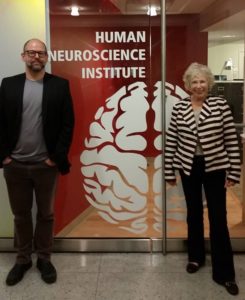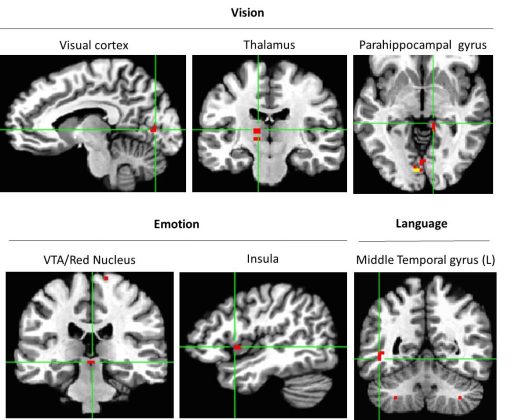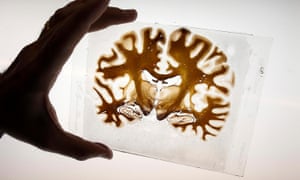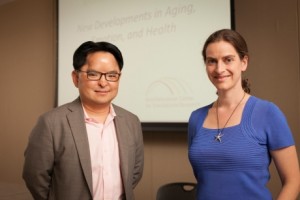Robert Sternberg was interviewed on October 9, 2018 for the podcast, What Makes Us Human? from Cornell University's College of Arts & Sciences. This is the podcast's third season, "What Do We Know About Love?" and Dr. Sternberg discusses his "Triangular Theory of Love."
I became interested in love when I was in a failing relationship (regrettably, one of several in my lifetime). I wondered what was wrong. I thought back to some of the relationships in my life I would have labeled at one time or another as “loving.”
The first was with a little girl I’ll call Joan, when I was in early elementary school. We could talk about anything. We even planned to be King and Queen of the world, and everyone except us would have to go around naked. We communicated well, cared about each other, felt like we could count on each other. In sum, Joan and I were truly intimate with each other, although of course strictly in a Platonic sense. After all, we were just 5 years old at the time!
The second relationship was with Jane (also not her real name). I saw Jane sitting in front of me in high school biology class and immediately fell head over heels for her. That year of school I obsessed over Jane. I could think of no one and nothing else. But it was totally one-sided. She had no interest in me, and when she met the captain of the soccer team at a New Year’s Eve party, I was totally out of the picture. What I felt for Jane was passion—infatuated love—but there was no intimacy. We even hardly spoke to each other.
The third relationship was with a woman I’ll call Joanne. The relationship started off well enough. But as time went on, it cooled. We seemed to be on different life paths and our understanding of each other got worse by the day. For a long time, we stayed with it, despite the fact that the relationship had tanked. Eventually, feeling commitment but little more, we split up.
These three relationships formed the basis for what I came to call a “triangular theory of love.” The basic idea is that love has three components: intimacy (as with Joan), passion (as with Jane), and commitment (as with Joanne). Each component contributes to the overall experience of love. And different combinations of components yield different kinds of love. Intimacy alone yields liking. Passion alone produces infatuated love. Commitment alone yields what I call empty love. Intimacy plus passion, without commitment, gives you romantic love. Intimacy plus commitment, but without passion, produces companionate love. Passion plus commitment, but without intimacy, gives you what I call fatuous or foolish love. And intimacy, passion, and commitment all combined yield consummate or complete love.
I devised a scale to measure each of the components of love, and then did what is called “construct validation,” testing both the theory and the scale with adult subjects around New Haven, Connecticut. We learned two important things. The first thing we learned wasn’t surprising: it turned out that more of each of the three components—intimacy, passion, and commitment—is associated with greater success and happiness in a relationship. But the second thing we learned was more surprising and more important: we found that relationships tend to be more successful when partners’ triangles match -- when each partner is looking for more or less the same thing. For example, if both partners value intimacy and passion but are not yet ready to commit, that will augur well for the relationship. But if one partner seeks intimacy and the other craves passion, things are not likely to work out all so well. Compatibility matters—a lot.
So what should you look for in a partner? Most of all, look for someone who wants the same things out of a relationship that you do. In that way, you ensure that what you mean by love and what your partner means by love are, more or less, the same thing. You will then have so much more reason to stay together!https://soundcloud.com/cornellcas/a-triangular-theory


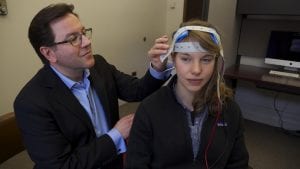

 In a new study led by
In a new study led by  arianella Casasola
arianella Casasola New research by
New research by  Students in
Students in Daniel Rosenfeld '18 and his adviser
Daniel Rosenfeld '18 and his adviser 

 Happiness isn't the only emotion that can help you stay healthy as you age. How excited, amused, proud, strong and cheerful you feel on a regular basis matters, too. In a new study, people who experienced the widest range of positive emotions had the lowest levels of inflammation throughout their bodies. Lower inflammation may translate to a reduced risk of diseases like diabetes and heart disease.
Happiness isn't the only emotion that can help you stay healthy as you age. How excited, amused, proud, strong and cheerful you feel on a regular basis matters, too. In a new study, people who experienced the widest range of positive emotions had the lowest levels of inflammation throughout their bodies. Lower inflammation may translate to a reduced risk of diseases like diabetes and heart disease.
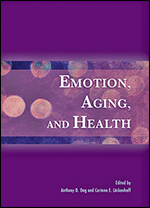 This book explores the reciprocal relations between aging and emotion, as well as applications for promoting mental and physical health across the lifespan. The authors discuss the neural and cognitive mechanisms behind age-related shifts in affective experience and processing.
This book explores the reciprocal relations between aging and emotion, as well as applications for promoting mental and physical health across the lifespan. The authors discuss the neural and cognitive mechanisms behind age-related shifts in affective experience and processing. Emotion, Aging, and Health (Bronfenbrenner Series on the Ecology of Human Development)
Emotion, Aging, and Health (Bronfenbrenner Series on the Ecology of Human Development) 